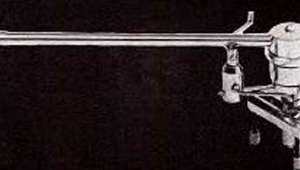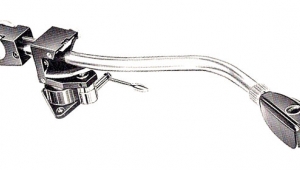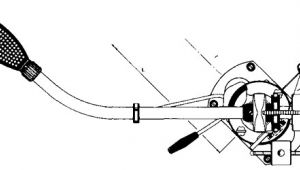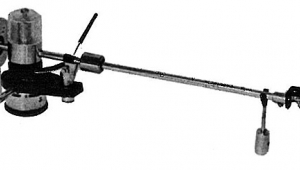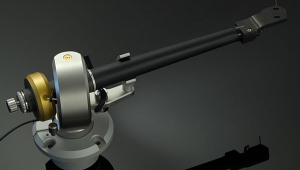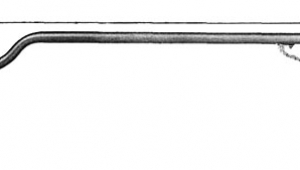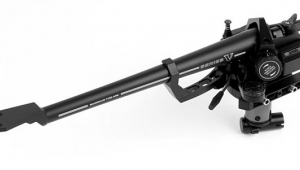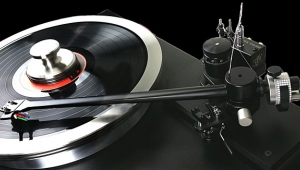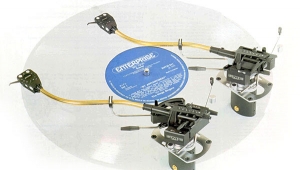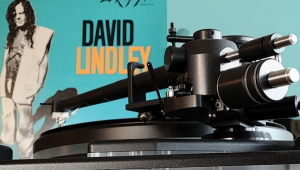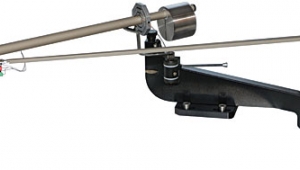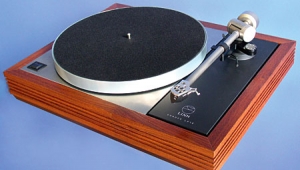| Columns Retired Columns & Blogs |
Airtangent tonearm Page 2
The reigning ethos is that every little vinyl niche hides yet another nuance that must be explored. As a result, equipment that can live up to such expectations must perform to an upward-spiraling performance standard. Such high-performance products are available, but somebody has to foot the bill for the development—that small number of customers who appreciate these specialty items. The result? High bottom-line manufacturing costs for such products as the Airtangent.
Footnote 1: It's so easy to burry your head in the sand. While enthusing about the Airtangent to a non-audiophile friend, I mentioned the auto-lift feature. He was nonplussed: "Don't most ordinary turntables give you that convenience as a matter of course?" he asked.
It saddens me to see the very limited press that some very significant product developments get. It's a shame that more people will not enjoy or benefit from these remarkable fruits of intense dedication, nor those responsible get the recognition they deserve. But such is the fate of singlemindedness, I suppose. But as small as the high-end community is, the appreciation for audio exotica is intense. Leif tells me that a total of 325 Airtangents have been sold worldwide.
The Airtangent started out innocently enough. Leif merely intended to satisfy his own need for an all-out tonearm, so he built a few prototypes. Word of his achievement somehow got out—in the audiophile community there is really no such concept as secrecy—and his fame spread quickly. Before he realized it, his pet project had outgrown the bounds of unassuming private adventure. At that point Leif made a decision to go into the tonearm business and the rest is history.
Speaking to Leif bore out my theory that achievements in the high end are based on the drive of a few individuals. His intensity, pride, and perseverance are nothing but admirable. (He got up at 4AM—his time—to phone in an explanation and some background information for this review.) It was also fascinating to see that express shipments from Sweden were much faster than some of the local transactions. In most instances, two days was all it took.
It is also why he never stops making improvements. A case in point is the cueing mechanism. When I first saw it, all he had was a manually operated mechanism. It did what it was required to do, but that was all. Next thing I know, the cueing bar is motor-driven. Leif had incorporated a small motor, normally used in cameras, in his design. Just recently I received a very sleek-looking mechanism which hides the movement of the cueing bar. This adds considerably to the overall elegance of the design. Leif says that he is driven to design the perfect product; I have detected nothing in his attitude that would lead me to doubt that premise.
The Airtangent—an Overview
Just what makes the Airtangent so special? Let's start with first impressions, something especially important for a tonearm costing $3200.
How many high-end products do you know that come packaged in an attache case? A flip of the lid is all that's needed to display each of the Airtangent's component parts, all properly secured in neatly contoured compartments of bright red foam. Against that background, the black and metallic finish of the components stands out ever so much more prominently and invitingly. This beautiful sight is bettered only when the Airtangent has been installed on a turntable.
Of course, the basic design is something we should know more about. In the case of the Airtangent, it's all in the name. While the "Air" part is obvious, the "tangent" may not be.
A tangent is a straight line touching a circle at one point only. More of interest here is another geometric fact: a tangent is always perpendicular to a radius of that circle. Simply put, if we keep the tip of the cantilever tangent to the record groove, the tip will always remain on the radius of the groove. Since the raison d'etre of a straight-line tonearm is to replicate the original traverse of the cutting stylus, we are home free. All we need is a virtually frictionless bearing design—and air is the way to go.
Such rigorous design requirements demand exacting tolerances. Not only must the parts fit properly, the structural integrity has to cope with resonances, stress, and stability. Recognizing this, an interesting conglomeration of materials can be found interspersed throughout the Airtangent, including acrylic, aluminum, copper, steel, magnesium, and titanium.
Every conceivable adjustment has been built into the Airtangent. Tracking force is set by a sliding counterweight, overhang and azimuth by a movable arm tube. VTA has a ball-bearing race with rack-and-pinion "steering." Also included is a damping trough for taming more exuberant playback situations.
But the one feature that sets this arm apart from the crowd is a honey: cartridges, completely adjusted and aligned, can be changed in seconds! That alone should make the Airtangent worth the price of admission!
As the air-tube is suspended only at one end, the other end is free, allowing the air-bearing sleeve to be easily slid off. Whole tonearm assemblies, balanced and set for each individual cartridge, can be exchanged with the greatest of ease. Just unplug a single connector for the cartridge signal, and the air-bearing sleeve and armtube are free to be removed. Slide another assembly in place, connect it, and you're all set to use another cartridge. The whole process takes less time than it took to read this.
But there's more. The icing on the cake is the electronically operated cueing bar for lowering and raising the cartridge, as well as the end-of-record auto-lift feature. The latter feature is a truly worthwhile convenience seldom seen on a high-end tonearm (footnote 1).
Last, but not least, my favorite part—execution. Nothing but the best workmanship and parts have been used. For example, Tiffany are used for the output connections to the preamp, and Lemo connectors elsewhere. I've already mentioned the interesting intermingling of exotic materials in use here, as well as the Airtangent's stunning design presence. But it's at the detail level that praise should be heaped. Every little detail seems to fall into place, resulting in a product that has my highest admiration.
I don't hesitate to mention a Rolls-Royce and an Airtangent in the same breath—it's a design that easily conjures up thoughts of other renowned creations. The Hasselblad, for one, springs to mind for obvious reasons—its reputation is legendary, and it also hails from Sweden.
Footnote 1: It's so easy to burry your head in the sand. While enthusing about the Airtangent to a non-audiophile friend, I mentioned the auto-lift feature. He was nonplussed: "Don't most ordinary turntables give you that convenience as a matter of course?" he asked.
- Log in or register to post comments
